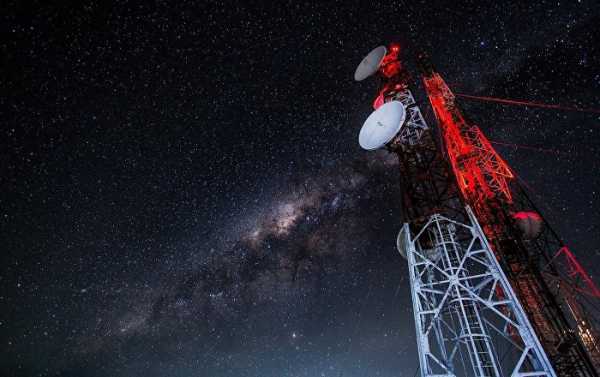
Recently, a group of international scientists made a fascinating discovery, revealing that a mysterious source in a galaxy 500 million light years from Earth was sending out fast radio burst signals in precise 16.35 day intervals, a phenomenon never observed before. Unsurprisingly, the discovery left Earthlings curious about the signal’s source.
Bad news for sky gazers looking for signs of extraterrestrial life: It turns out that the probability that those mystery radio signals being beamed to Earth from galaxies far, far away are extremely, extremely unlikely to have been sent out by aliens. Or at least they probably weren’t, astrobiologists and physicists say.
Speaking to Science Alert about the widely reported-on scientific study about a mystery signal tracked down to a star-forming galaxy sending us fast radio burst signals in precise 16.35 day cycles, including 1-2 bursts per hour over four days and then 12 days of silence before starting up again, Dr. Charles Lineweaver, an associate professor specialising in astrobiology and planetary sciences at Australian National University, said he didn’t buy the hype about it being aliens.
“[It] reminds me of the way we used to invoke gods. Instead of ‘gods of the gaps’, we now have ‘aliens of the gaps’,” the professor added, referring to the Gods-of-the-gaps fallacy which assumes an act of God as the automatic explanation for any phenomenon which science has yet to explain.
In fact, Dr. Lineweaver noted, even in instances where a planet’s conditions may become suitable for life, as Earth did billions of years ago, the level of evolution required for human-like intelligence or above is far from a foregone conclusion. “My reading of biological evolution on Earth is that human-like intelligence is not a convergent feature of evolution,” he said.
For his part, Dr. Paul Ginsparg, a physicist at Cornell University, was similarly sceptical, dismissing the idea that the fast radio burst signals picked up by Earth-based monitoring systems were produced by alien spacecraft or communications systems.
“My understanding is that those explanations are not excluded by the available evidence. But also that they are not required by it, in the sense that there remain equally or more plausible explanations that don’t employ extraterrestrial intelligence,” Dr. Ginsparg explained.
Having said that, the professor didn’t disparage the kind of ‘it’s Aliens!’ sensationalism often associated with astronomers’ discoveries, saying discussions about extraterrestrials can help non-scientists realise “the sorts of amazing observations being made,” as well as “the fun that scientists have thinking about them, and the possibilities that are out there”.
An anonymous astronomer specialising in fast radio burst signals told the outlet that “the best argument against the extraterrestrial hypothesis is that we see FRBs with all sorts of weird properties (some wide, some narrow, some polarised, others not, some have multiple pulses, some are a single pulse). If I were designing a spacecraft propulsion system (which would be bloody good fun), I’m not sure some of those properties (eg. Changing polarisation over the pulse), would make a better spacecraft engine.”
According to Science Alert contributor Michelle Starr’s calculations, for the fast radio burst signals picked up by scientists on Earth to have an alien origin, “at least 100 different alien species would have to be technologically advanced [enough] to produce such a powerful signal that it can move across space and still be detected by us”.
In other words, for the time being anyway, human beings appear destined to remain the only verifiable form of intelligent life.
Sourse: sputniknews.com






